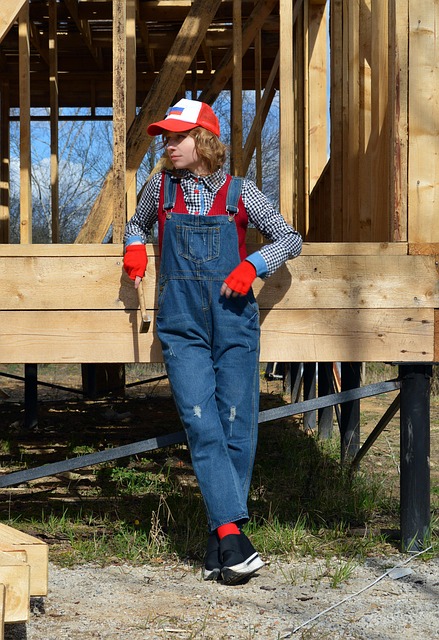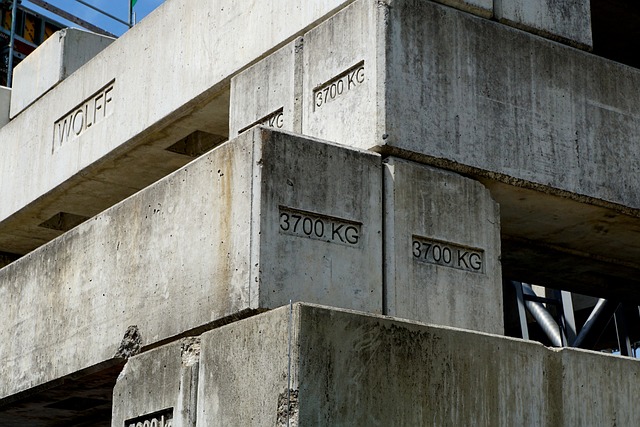Residential foundation repair is crucial for stabilizing and preserving homes in areas prone to sinking or settling. Early detection of signs like cracks, uneven floors, and stuck doors is key, as it allows for non-invasive diagnostic methods and swift action. Factors such as soil conditions, construction practices, and nearby excavations contribute to foundation issues, making professional intervention essential for severe cases. Advanced tools like GPR and digital imaging aid in accurate detection, while traditional methods like underpinning and piering offer durable solutions. Timely repair prevents damage, reduces costs, and ensures long-term stability for homes with sinking foundations. Proactive maintenance and regular inspections are vital to protect investments and avoid costly repairs.
Sinking foundations can be a serious issue for homeowners, leading to structural damage and costly repairs. This comprehensive guide explores the intricacies of residential foundation repair, empowering you to identify common signs of distress, understand the underlying causes, and learn effective diagnostic and reparative techniques. From non-invasive methods to traditional solutions, we delve into when to seek professional help and preventative measures for long-term stability. Discover key cost considerations and explore enduring remedies for a secure, stable home foundation.
Understanding Residential Foundation Repair: The Basics

When it comes to residential foundation repair, understanding the basics is crucial for any homeowner. This involves recognizing common signs of distress in your home’s foundation, such as cracks in walls or floors, doors and windows that stick or close improperly, uneven floors, and slanted walls or ceilings. These issues could indicate a sinking or unstable foundation, which often requires prompt attention to prevent further damage.
Residential foundation repair encompasses various techniques aimed at stabilising and strengthening the structural integrity of your home. The process may involve underpinning, where additional support is added below the foundation to raise and stabilise it, or underpinning and stabilization methods that use modern technology like helical piles or slab jacks to secure the foundation. Early detection of these sinking signs can make a significant difference in the repair process, ensuring costs are lower and the structural integrity of your home is preserved for years to come.
Identifying Common Signs of Sinking Foundations

Identifying common signs of sinking foundations is crucial for homeowners, especially in areas prone to settlement or soil issues. One of the earliest indicators is noticeable cracks in walls or ceilings, which can range from hairline fractures to broader gaps. These cracks often appear in straight lines and may reveal underlying structural damage caused by the foundation shifting or settling unevenly. Another visible sign is door and window frames that no longer fit properly; they might stick, swing unnaturally, or fail to close tightly. This is a clear indication of lateral movement in the foundation.
Additionally, slanted or bowed walls are red flags for residential foundation repair needs. These issues can lead to uneven floors, making some areas higher than others. Floors that develop bumps, dips, or become unlevel also suggest a sinking foundation problem. Over time, these signs can escalate and result in structural instability if left unattended. Homeowners should be vigilant and promptly contact professional foundation repair services for an accurate assessment and effective solutions, such as piering or underpinning techniques, to address these issues before they worsen.
Causes of Foundation Sinking in Residential Properties

The sinking or settling of foundations in residential properties is a common concern that often requires professional intervention, specifically from experts in residential foundation repair. Several factors contribute to this issue, each with its unique impact on the structural integrity of a home. One primary cause is poor soil conditions, such as expansive clay soils that swell and contract with moisture changes, putting immense pressure on the foundation. Over time, this can lead to cracks, uneven floors, and doors that stick or close improperly.
Another significant reason for foundation sinking is inadequate soil support below the foundation walls. When the soil beneath a home compactifies or erodes differently from other areas, it creates an imbalance that pulls the foundation downward. Construction practices also play a role; improper drainage systems, poor grading, or nearby excavations can exacerbate these issues. Identifying and addressing the root cause is crucial to prevent further damage and ensure the longevity of the property.
Non-Invasive Methods for Diagnosing Foundation Issues

When it comes to diagnosing foundation issues, non-invasive methods are often the preferred choice for homeowners seeking residential foundation repair. These techniques allow experts to assess potential problems without causing additional damage or disrupting the structure. One such method is ground-penetrating radar (GPR), which uses electromagnetic waves to create detailed images of the soil and underlying foundations. This technology can identify cracks, voids, or shifts in the foundation’s integrity, enabling accurate detection of early-stage issues.
Another popular non-invasive approach is the use of digital imaging and remote sensing. High-resolution cameras and sensors capture visual data, which is then analyzed to reveal signs of foundation failure. This method is particularly useful for monitoring the progress of repairs and ensuring long-term stability. By combining these advanced diagnostic tools with expert knowledge, homeowners can effectively address foundation problems before they lead to costly and extensive residential foundation repair work.
Traditional Techniques for Foundation Repair

When a foundation starts to sink, it’s crucial to act swiftly for effective residential foundation repair. Traditional techniques have proven their mettle over time, offering solutions that range from underpinning to piering and piling. Underpinning involves installing new support structures beneath the foundation, while piering and piling use vertical supports to redistribute the load and stabilize the structure. These methods have been successfully employed for decades, ensuring homes remain secure and structurally sound.
For more severe cases, a combination of these techniques might be necessary. Experts in residential foundation repair carefully assess the damage, considering factors like soil conditions, the age of the home, and the extent of sinking. This comprehensive evaluation guides the selection of the most suitable and durable solution, ensuring long-lasting stability for the property.
When to Call a Professional for Foundation Repairs

If you notice any signs of a sinking foundation, it’s crucial to act swiftly. While some minor issues might be addressable with DIY methods or simple repairs, more severe cases often require professional intervention. A residential foundation repair expert is equipped to assess and diagnose complex problems that may include cracks in walls, uneven floors, stuck doors or windows, and visible gaps in the foundation.
When structural integrity is compromised, it’s essential to consult a specialist in residential foundation repair. They can provide tailored solutions such as underpinning, piering, or slab jacking to stabilize and level your home’s foundation. Timely intervention by professionals can prevent further damage, costly repairs down the line, and ensure the long-term safety and value of your property.
Preventative Measures to Stabilize Your Home's Foundation

If you’re concerned about your home’s foundation, taking proactive steps is key to preventing significant damage. Regular maintenance is the first line of defense against foundation problems; schedule periodic inspections to identify any potential issues early on. These inspections should include assessing the soil around your property, checking for signs of water intrusion, and examining the state of your drainage systems.
Addressing minor cracks or uneven floors immediately can prevent them from becoming more severe. Implementing proper drainage solutions, such as directing rainwater away from your home’s foundation, is crucial to preventing moisture-related damage. Additionally, ensuring consistent humidity levels inside your home through adequate ventilation can alleviate stress on the foundation caused by extreme moisture fluctuations. Remember, proactive measures like these contribute significantly to the long-term stability of your residential foundation repair.
Cost Considerations for Foundation Repair Projects

When addressing sinking foundation issues, one of the key aspects homeowners should consider is the financial commitment required for residential foundation repair projects. The cost can vary greatly depending on several factors, including the severity of the problem, the size and type of home, and the specific repair techniques employed. For minor cases involving cracks or slight unevenness, the expenses are usually lower, ranging from a few hundred to a thousand dollars. This may include structural adjustments, piering, or minor underpinning work.
However, for more significant sinking foundation issues, such as severe slant, large cracks, or even structural failure, the costs can escalate substantially. Major repairs might involve extensive excavation, deep underpinning, or even complete foundation replacement, which can cost tens of thousands of dollars. It’s crucial to consult with experienced professionals who can assess the problem and provide accurate estimates tailored to each unique case, ensuring homeowners make informed decisions for their Residential Foundation Repair needs.
Long-Term Solutions for Maintaining a Stable Foundation

Maintaining a stable foundation is paramount for any property, and long-term solutions are key to preventing future issues. For residential properties, regular inspections by professionals specializing in residential foundation repair are essential. They can identify subtle signs of distress before they escalate, ensuring timely intervention.
One effective strategy involves addressing the root causes, such as poor soil conditions or improper drainage. Implementing proper landscaping techniques and efficient irrigation systems near the foundation can significantly reduce moisture-related problems. Additionally, reinforcing existing support structures with advanced materials like steel beams or pile driving can enhance structural integrity over time.
